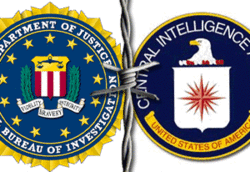Compartmentalisation
(tradecraft, statecraft, classification) | |
|---|---|
 | |
| An ancient technique of dividing information up between people to prevent the 'bigger picture' from being available to any of them. |
Compartmentalisation is a divide and conquer technique in the area of information; project secrecy is promoted by strict segregation of the available information.
Contents
Hypothetical example
An abstract example may help illustrate the effectiveness; a project to carry out an incriminating event (represented in the abstract by the phrase "false flag") can be broken down into smaller pieces (e.g. "f", "a", "l", "s", "e", " ", "f", "l", "a", "g"), each of which is necessary but none of which on their own yields any insight into the meaning of the operation. So, in the real world, one team could prepare some explosives, another team could drive an unknown substance somewhere, a third team could send someone an encrypted invitation and so on. In this way, hierarchies of people can be organised, complex plans and subplans enacted without those involved being aware of what they are really doing.
Real life example
Richard Lambert is the FBI agent who headed the FBI's "investigation" into the Amerithrax case from 2002 to 2006. In a 2018 interview for the Opperman Report he stated that the investigation was extremely compartmentalised. He reports that he was told that this was an effort to prevent leaks about its progress. When challenged about the leaks, he invited his superiors to take a polygraph test with him but they declined.[1]
Operation
The fundamental principle is that information is given only on a need-to-know basis.
Weaknesses
Information sharing between operatives, for example due to poor design or lax implementation of compartmentalisation can overcome the technique, allowing those involved to see the bigger picture.
Sibel Edmonds joined the FBI after 9-11 when they were very short of translators for Turkish languages. This lack of staff hindered compartmentalisation. She has testified how compartmentalisation prevented agents on the ground from forming a bigger picture of the intrigues they were involved in, but that she, as a translator, was better positioned to get an overview:
“The most important thing for people to get is we're not even looking at one big investigation, all these agents working together. They were chopped up and divided, but because I worked in the central place... other agents were sending their material to me... I was in this position to see all the dots being connected... These agents, while I was there, because I was the central person, they started connecting the dots.”
Sibel Edmonds [2]
An example
| Page name | Description |
|---|---|
| Eyewash | A compartmentalization technique used by intelligence agencies such as the CIA, in which senior spooks intentionally deceive other members of the same group by transmitting internal memos that contain false information. |
Related Quotation
| Page | Quote | Author | Date |
|---|---|---|---|
| US/Deep state | “The apparatus of the American deep state is a vast system of institutions in which the proverbial right arm does not know what the left one is doing. The CIA, FBI, NSA and the military services are compartmentalized to a point where very few of the bureaucrats in their employ can put their finger precisely on what is going on. Best known examples of that kind of entity are the resistance movements in German occupied Europe of World War II, and the cell system of an expansionist communist movement in the early stages of its development. Movie goers are familiar with the ‘need to know’ limitations on the information given to participants in an operation. The numerous levels of ‘security clearance’ make that clear. They have created labyrinths of hidden policy making over which no effective political control can exist. This applies to internal control as well. The institutions of the American deep state are riven by turf battles, schisms, something quite noticeable in their conflict with President Trump and, indeed, eruptions from officials with a conscience. This produces leaks and whistleblowing. These may be seen as emergency actions in the absence of functioning accountability structures.” | Karel van Wolferen | 4 April 2017 |